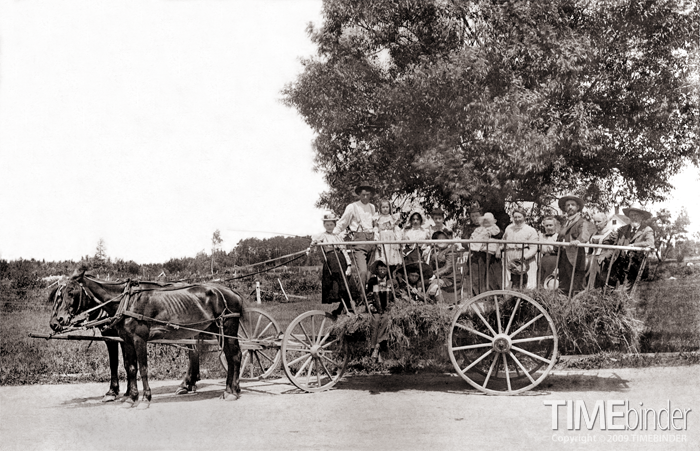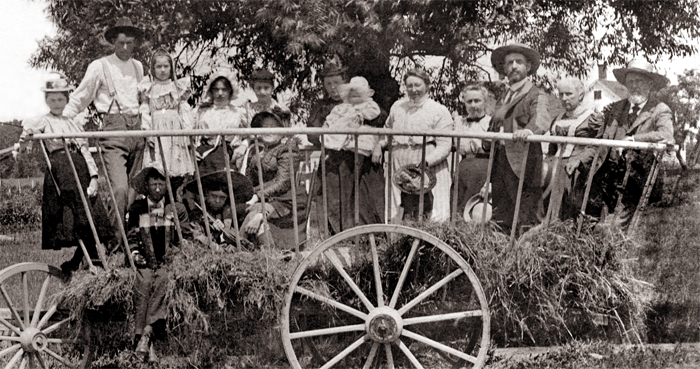General Merchandise
 Monday, June 22, 2009 at 2:04PM
Monday, June 22, 2009 at 2:04PM 
This postcard-sized print presents some interesting questions: clearly it is not the usual sort of community general store, but a mercantile business for multiple purposes. The building is proof of substantial investment with design details that go beyond the utilitarian and maximize useable interior space – it makes a bit of a statement. The store appears uncluttered; there are advertisements in the spacious windows that may indicate clothing, notions and home wares (lamps, dishes, etc.) rather than common grocery goods and agricultural products which ordinarily are indicated by a proliferation of signs tacked helter-skelter on the exterior, yet there is a loading dock and covered sheds that have crates and boxes. The small posters in the upper panes of the display window may be Beatrice Potter’s Jemima Puddleduck, so perhaps they sold books and stationery items also.
The carriages and riding horse (the woman is mounted astride in spite of her voluminous skirt) may raise the question of whether there is a livery stable attached to the business. The people in the photo face the camera or are aware that they are posing; a long bench has been placed directly across the doorway – surely not its usual place. If the proprietors use it as a residence, they don’t appear to occupy the apparently empty second story front rooms; outside access to the upper floors is not evident to us. It is odd that there is no sign on the structure because weather stains on the paint indicate that it is not newly built. How this large late 19th century commercial/living space is used is a mystery, though there is the possibility that it has recently changed hands and may be in a state of transition under new ownership. Conjectures, all of them!
 COMMERCE
COMMERCE 









